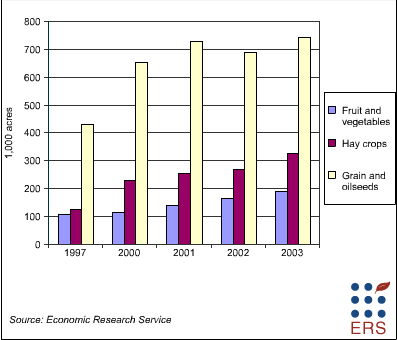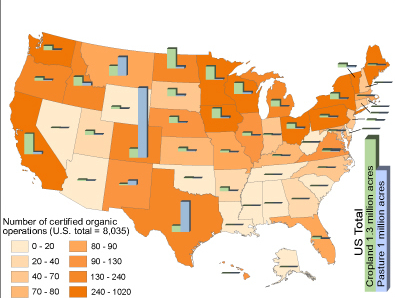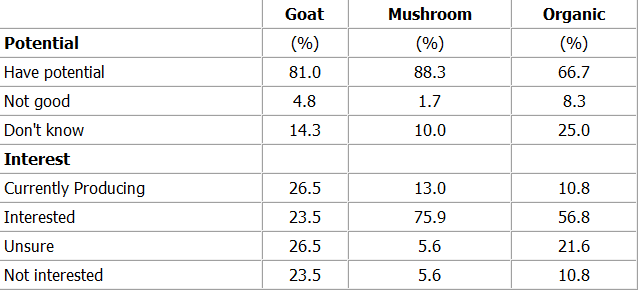 All papers examples
All papers examples
Disciplines

- MLA
- APA
- Master's
- Undergraduate
- High School
- PhD
- Harvard
- Biology
- Art
- Drama
- Movies
- Theatre
- Painting
- Music
- Architecture
- Dance
- Design
- History
- American History
- Asian History
- Literature
- Antique Literature
- American Literature
- Asian Literature
- Classic English Literature
- World Literature
- Creative Writing
- English
- Linguistics
- Law
- Criminal Justice
- Legal Issues
- Ethics
- Philosophy
- Religion
- Theology
- Anthropology
- Archaeology
- Economics
- Tourism
- Political Science
- World Affairs
- Psychology
- Sociology
- African-American Studies
- East European Studies
- Latin-American Studies
- Native-American Studies
- West European Studies
- Family and Consumer Science
- Social Issues
- Women and Gender Studies
- Social Work
- Natural Sciences
- Anatomy
- Zoology
- Ecology
- Chemistry
- Pharmacology
- Earth science
- Geography
- Geology
- Astronomy
- Physics
- Agriculture
- Agricultural Studies
- Computer Science
- Internet
- IT Management
- Web Design
- Mathematics
- Business
- Accounting
- Finance
- Investments
- Logistics
- Trade
- Management
- Marketing
- Engineering and Technology
- Engineering
- Technology
- Aeronautics
- Aviation
- Medicine and Health
- Alternative Medicine
- Healthcare
- Nursing
- Nutrition
- Communications and Media
- Advertising
- Communication Strategies
- Journalism
- Public Relations
- Education
- Educational Theories
- Pedagogy
- Teacher's Career
- Statistics
- Chicago/Turabian
- Nature
- Company Analysis
- Sport
- Paintings
- E-commerce
- Holocaust
- Education Theories
- Fashion
- Shakespeare
- Canadian Studies
- Science
- Food Safety
- Relation of Global Warming and Extreme Weather Condition
Paper Types

- Movie Review
- Essay
- Admission Essay
- Annotated Bibliography
- Application Essay
- Article Critique
- Article Review
- Article Writing
- Assessment
- Book Review
- Business Plan
- Business Proposal
- Capstone Project
- Case Study
- Coursework
- Cover Letter
- Creative Essay
- Dissertation
- Dissertation - Abstract
- Dissertation - Conclusion
- Dissertation - Discussion
- Dissertation - Hypothesis
- Dissertation - Introduction
- Dissertation - Literature
- Dissertation - Methodology
- Dissertation - Results
- GCSE Coursework
- Grant Proposal
- Admission Essay
- Annotated Bibliography
- Application Essay
- Article
- Article Critique
- Article Review
- Article Writing
- Assessment
- Book Review
- Business Plan
- Business Proposal
- Capstone Project
- Case Study
- Coursework
- Cover Letter
- Creative Essay
- Dissertation
- Dissertation - Abstract
- Dissertation - Conclusion
- Dissertation - Discussion
- Dissertation - Hypothesis
- Dissertation - Introduction
- Dissertation - Literature
- Dissertation - Methodology
- Dissertation - Results
- Essay
- GCSE Coursework
- Grant Proposal
- Interview
- Lab Report
- Literature Review
- Marketing Plan
- Math Problem
- Movie Analysis
- Movie Review
- Multiple Choice Quiz
- Online Quiz
- Outline
- Personal Statement
- Poem
- Power Point Presentation
- Power Point Presentation With Speaker Notes
- Questionnaire
- Quiz
- Reaction Paper
- Research Paper
- Research Proposal
- Resume
- Speech
- Statistics problem
- SWOT analysis
- Term Paper
- Thesis Paper
- Accounting
- Advertising
- Aeronautics
- African-American Studies
- Agricultural Studies
- Agriculture
- Alternative Medicine
- American History
- American Literature
- Anatomy
- Anthropology
- Antique Literature
- APA
- Archaeology
- Architecture
- Art
- Asian History
- Asian Literature
- Astronomy
- Aviation
- Biology
- Business
- Canadian Studies
- Chemistry
- Chicago/Turabian
- Classic English Literature
- Communication Strategies
- Communications and Media
- Company Analysis
- Computer Science
- Creative Writing
- Criminal Justice
- Dance
- Design
- Drama
- E-commerce
- Earth science
- East European Studies
- Ecology
- Economics
- Education
- Education Theories
- Educational Theories
- Engineering
- Engineering and Technology
- English
- Ethics
- Family and Consumer Science
- Fashion
- Finance
- Food Safety
- Geography
- Geology
- Harvard
- Healthcare
- High School
- History
- Holocaust
- Internet
- Investments
- IT Management
- Journalism
- Latin-American Studies
- Law
- Legal Issues
- Linguistics
- Literature
- Logistics
- Management
- Marketing
- Master's
- Mathematics
- Medicine and Health
- MLA
- Movies
- Music
- Native-American Studies
- Natural Sciences
- Nature
- Nursing
- Nutrition
- Painting
- Paintings
- Pedagogy
- Pharmacology
- PhD
- Philosophy
- Physics
- Political Science
- Psychology
- Public Relations
- Relation of Global Warming and Extreme Weather Condition
- Religion
- Science
- Shakespeare
- Social Issues
- Social Work
- Sociology
- Sport
- Statistics
- Teacher's Career
- Technology
- Theatre
- Theology
- Tourism
- Trade
- Undergraduate
- Web Design
- West European Studies
- Women and Gender Studies
- World Affairs
- World Literature
- Zoology
Organic Farming, Thesis Paper Example
Hire a Writer for Custom Thesis Paper
Use 10% Off Discount: "custom10" in 1 Click 👇
You are free to use it as an inspiration or a source for your own work.

Trends and Factors Influencing Adoptions
Organic farming has grown rapidly in the USA in recent years. Consumers are looking towards more healthier lifestyles and prefer produce free from chemicals. Organic production in the USA has been growing at a rate of around 20% over the last several years. One of the constraints with organic produce has been the cost of production in a weak US economy. In particular, there remains a shortage in the areas of organic grains, sugars, corn and soybeans. The shortage of organic feed for livestock has prevented organic producers from meeting market demand for their products.
Sales of certified organic products in the USA were reported as being as around the US 5 billion mark in 1997 and is now consider this to be in excess of $7 billion. This being around 2% of the overall food and beverage marketing USA. This is now expected to grow to around 10% with the future projection of 18% by 2015. (Larsen) At the moment demand continues to outstrip supply. Organic farming has proved expensive as this is a high-technology product which involve sophisticated soil management and pest control procedures. This has proved more of a challenge to areas like Central America, that does not have the right balance of soil fertility.
Sales of organic products are reported as being up by $21.1 billion in 2008 from $3.6 billion in 1997. This rapid growth has caused basically big shift in the supporting retailers, manufacturers and distributors of organic products. The increased demand has created need for more research and development in this area. “The 2008 Farm Act has injected $5 million of additional funding for research activities in organic farming. – Consumers of all ages, races, and ethic groups who have higher levels of education are more likely to buy organic products than less-educated consumers. Other factors, such as race, presence of children in the household, and income, do not have a consistent effect on the likelihood of buying organic products.” (Oberholtzer).
Tennessee in the USA has some 26.4 million[1] acres of land mass with 44% in farm production. Only 4.4 million acres are used for harvestable crop production, and in 2004 it was reported to be 85,000 farms in Tennessee. The average farm size being hundred 36 acres and 25% of average incomes above the $10,000 Brown. In 2001 Tennessee and be reported immediately hundred acres being devoted to organic farm production. This having decreased from 1997 where it was reported to have produced 1351 acres of organic production. The decreases attribute it to a lack of local certification programs. “Tennessee does not operate as a national organic program. [USDA-NOP] accredited certification agency. “(Ferry)
The US Department of Agriculture have been instrumental in the promotion of organic farming and bio diversity. ” USDA implemented national standards for organic production and processing in October 2002, following more than a decade of development, and the new uniform standards have facilitated further growth in the organic farm sector. USDA’s organic standards incorporate cultural, biological, and mechanical practices that foster cycling of resources, ecological balance, and protection of biodiversity—practices that have evolved over the last half-century.” (Greene). Fig 1 illustrates the composition of US certified organic acreage between 1997 – 2003. Fig 2 illustrates the certified organic acreage across the different States in 2003.

Figure 1 US certified organic acreage 1997-2003
The Tennessee Organic Growers Association (TOGA) will help farmers in gaining assistance with the oreganic growers certification and accreditation process. Most of the farmers are relatively poor dirt farmers and as such cannot afford the high technology to support organic farming. This accounts for a large portion of the land being turned over to battery chicken, hogs and sheep farms. The cost alone is a significant barrier to farmers moving over to organic farming.

Figure 2 Certified Organic acreage in 2003
The Town of Signal Mountain in Tennessee holds out great hope for a future trend in promotion of organic farming in that State. ” Beating out New York City, the small Tennessee town of Signal Mountain is the first in the nation to pass a Green Food Resolution – a Green Food Resolution is, “an ordinance designed to counteract the massive health and environmental damage created by large-scale factory farms and the meat industry, by encouraging local farms, plant-based diets, ecological sustainability and nutritious eating habits.” (Underwood). This move ensures that all local grown organic produce is given priority in retail selling and procurement of food for domestic consumption. The idea has since spread to other local councils who are keen to promote the movement towards healthier living standards.
Farm services agency USDA office assistance to the Tennessee farmers who wish to adopt organic farming practices. They offer such items as fuel, fibre and food supplies. Farmers raising tobacco as a crop and have seen a decline in demand, may obtain financial assistance to convert to organic farming practices. Organic farming should be considered as a viable option is for the small farm holder. Organics are a rapidly developing a marketplace. and should enable scope for an increased range of diversity in order to obtain increased profitability for the farm. Organic produced mushrooms are an example for a of this growing demand.

Figure 3 Farmers interest in diversity in Tennessee
There is a need to improve the education and communication to farmers on the need for alternative farming practices, including that of organic farming. ” When farmers were asked in which areas they need more information in order to enhance adoption of alternative enterprises, a majority (77.3%) of the farmers (75% in Tennessee and 80% in North Carolina) indicated that they need more Extension/education/outreach information” (Muhammad).
The University of Tennessee at Knoxville officially changed the name of the small grains unit to that of the organic crops unit. (Simpson) A and subsequently hosted a tour of the new organic farming unit 250 local farmers. The 9080 unit was a showcase of organic farming produce and what could be accomplished by small farmers switching to organic farming methods. It was illustrated how farms could raise the levels of profits by use of different farm inputs and producing high-yield organic crops. The visitor also received instruction in how to become a USDA certified organic grower. The farmers were shown a range of organic farming techniques that included conservation methods, tillage, high tunnel production, variety trials, enhancing beneficial insect populations, the reduction of soil borne pathogens and the management of weeds. The University plays, an important part in helping local farmers with a high technology and scientific knowledge in order to understand the benefits and improvements that can be made by organic farming methods. By having a live showcase covering some 90 acres. It is possible for the small farmers to have a live demonstration of the methods and techniques that are being used within the research and development area of the University. ” UT AgResearch is a division of the UT Institute of Agriculture. In addition to its agricultural research programs, the UT Institute of Agriculture also provides instruction, research and public service through the UT College of Agricultural Sciences and Natural Resources, the UT College of Veterinary Medicine and UT Extension offices in every county in the state” (Simpson).
Works Cited
Ferry, Sue Baird Margaret Scoles Barbara Bellows Elaine. Southern Organic Resource Guide. 8 2005. 7 6 2010 <http://attra.ncat.org/sorg/tn/>.
Greene, Catherine. “Organic Agriculture.” Economic Research Service, US Dept of Agriculture (2006): Chapter 4.9.
Larsen, Sydney Rosen and Brice. The US Organic Market : Trends and implications for central american exports. 1 2 2000. 7 6 2010 <http://www.probeinternational.org/coffee/us-organic-market-size-trends-and-implications-central-american-agricultural-exports>.
Muhammad, Safdar. “Promoting Alternative Enterprises: Assessing Farmers’ Needs in Research, Education, and Extension.” Journal of Extension (2009): Vol 47 No 6.
Oberholtzer, Carolyn Dimitri and Lydia. “Marketing US Organic Foods.” Economic Information Bulletin : US Dept of Agriculture (2009): Number 58.
Simpson, Bobby. It’s Official: Tennessee Opens New Organic Crops Unit . 29 5 2009. 7 6 2010 <http://www.agriculture.utk.edu/news/releases/2009/0905OrganicPost.html>.
Underwood, Kristin. “Tennessee Town Passes Nation’s First Green Food Resolution.” Food and Health (2009).
[1] Statistics from USDA 2002 Farm Census – www.crs.usda.gov

Stuck with your Thesis Paper?
Get in touch with one of our experts for instant help!

Time is precious
don’t waste it!
writing help!


Plagiarism-free
guarantee

Privacy
guarantee

Secure
checkout

Money back
guarantee

